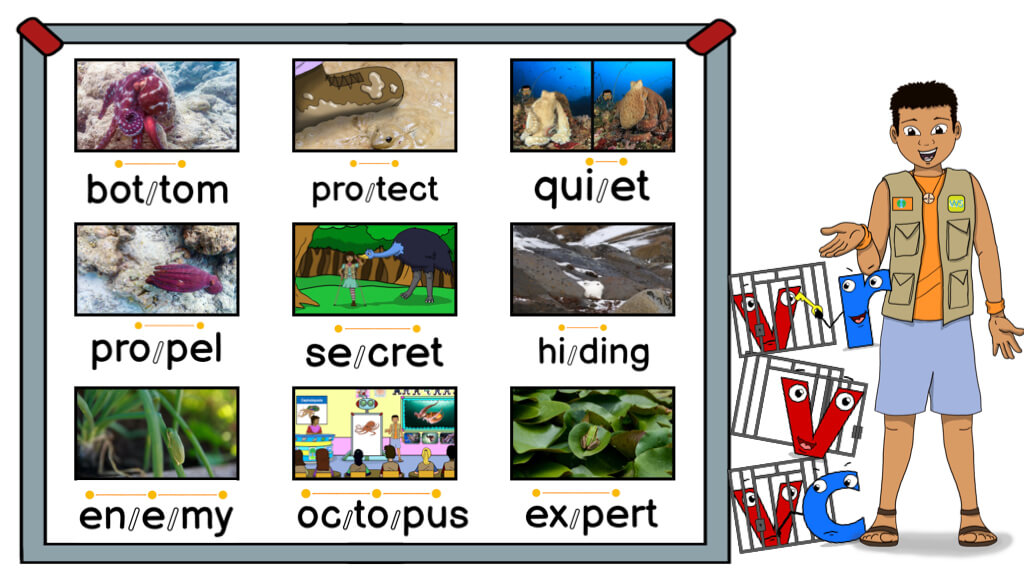Focus on the step of having readers identify the vowel-consonant pattern with the visual cues. Readers can divide words on a whiteboard.
RETURN
Activity: Words Are Made of Syllables
- Phase 3: Full Alphabetic Course
- QU-Blend | Octopuses
- Prepare to Read

Standards
Decode regularly spelled two- and three-syllable words.
Reader Goals
I can use strategies to read words with more than one syllable.
Target Words
bottom, protect, quiet, propel, secret, hiding, enemy, octopus, expert